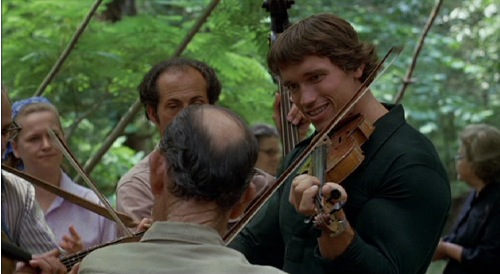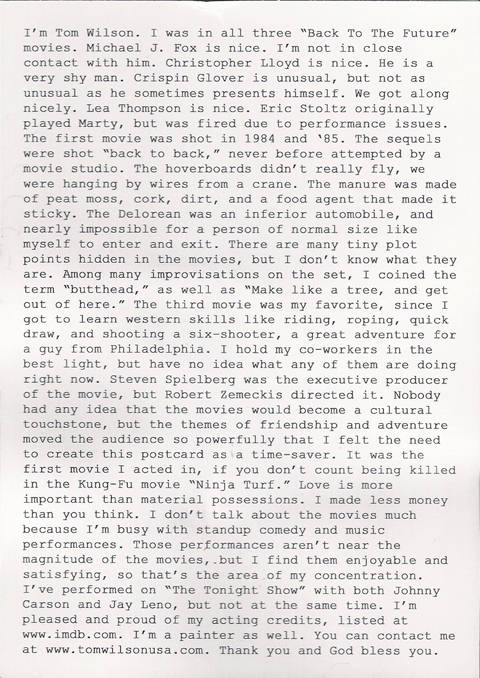With the DVD format now in its final death spiral leading out of the marketplace, I find I’m buying more of them than ever. What’s happening is that retailers and budget stores that specialize in closeout merchandise are dumping old inventory at ridiculously low prices, in some cases lower than it would cost to rent them, assuming there were still any rental stores around. But of course browsing a video store for back-catalog stuff I haven’t seen is no longer an option, and Netflix’s recommendation algorithms just never seem to generate the same level of serendipity I used to experience as I wandered up and down aisles of actual, physical media. So I’ve taken to rolling the dice and buying el-cheapo DVDs at Big Lots sight-unseen on the off chance they may be something I’ll like. I admit I’ve ended up feeling like I wasted my money more than once. But I’ve also gotten lucky with a few titles that turned out to be really good. Or at least really interesting for some reason. Case in point: a 1976 film called Stay Hungry.
Directed by Bob Rafelson, who’s best known for the Jack Nicholson vehicle Five Easy Pieces — that’s the one with the famous scene of Jack dealing with an unpleasant waitress in his own inimitable fashion — Stay Hungry stars an achingly young Jeff Bridges as the only son of a wealthy Southern family who’s trying to find his place in the world following the death of his parents. Having fallen in with a group of real-estate developers who want to build a high-rise office tower, Bridges is given the assignment of acquiring the last hold-out property on the block, a broken-down old gymnasium. But the situation becomes complicated when Bridges finds himself drawn to the eccentric family of characters who inhabit the place, notably a perky receptionist and a charismatic bodybuilder named Joe Santo, who is in training for the upcoming Mr. Universe contest.
Stay Hungry is pretty typical of early-70s mainstream cinema, an uneasy blend of comedy and drama with a loosey-goosey plotline that sometimes feels aggravatingly aimless, as well as a tone that veers from whimsical to discomforting to downright horrifying, before veering into straight-out farce at the story’s climax. To be honest, I wasn’t sure I was even liking the film until it was over — for the record, I’ve since decided that, yes, I did like it — but the one element that kept me going through my uncertainty was the cast. Jeff Bridges wasn’t yet the national treasure he has since become; in certain scenes, he comes off as trying too hard. But in others he was so perfectly naturalistic and utterly inhabiting the character, it’s easy to forget who you’re watching. And of course he’s always been an amiable presence, even in films where he’s played more unsympathetic characters.
The adorable Sally Field made her feature-film debut in Stay Hungry, successfully transitioning away from child-star television roles in Gidget and The Flying Nun, in part by baring her behind in a post-lovemaking scene. But even without that bonus attraction, she turns in a professional, layered performance and it’s very easy to believe Bridges would fall for her hard enough to change his entire life. (Full disclosure: I’ve always had a bit of a thing for Miss Frog.)
The supporting cast includes several familiar faces that are fun to see so much younger than we’re accustomed to, including Scatman Crothers as Bridges’ family butler, a pre-Freddy Krueger Robert Englund, Ed Begley Jr., and Roger C. Mosley, a.k.a. TC the chopper pilot on Magnum P.I.
But the really fascinating presence in this film is the guy playing Joe Santo, a real-life bodybuilder named… Arnold Schwarzenegger. Although Stay Hungry was technically his third film following Hercules in New York and Robert Altman’s The Long Goodbye, this was the first time audiences had heard his true voice and his distinctive Austrian accent (he was dubbed in Hercules, and menacingly silent in the Altman film), so his credit in Stay Hungry justifiably reads “Introducing…” Arnie was at the height of his Mr. Universe days here — Joe Santo’s story is a thinly disguised version of his own biography — and his body is simply a wonder to behold, especially in the film’s conclusion when we see him in competition, flexing and posing alongside a man who is his equal in size, but lacks Arnold’s definition and — just as importantly — his showmanship. He truly was astounding. But far more captivating than his physique in this film is the character he played, so completely unlike the familiar wisecracking action-figure persona he adopted later on in the ’80s. Joe Santo is inhumanly focused on his workouts, yes, but other than that he’s… nice. He’s friendly and supportive of his friends and self-effacing and sympathetic. After a lifetime of “I’ll be back”-style quips, it’s downright startling to see Arnold playing just a guy. And even though I doubt he ever would have become a great actor, certainly not someone on the level of his Stay Hungry costar Jeff Bridges, I find myself a little sad that he didn’t play more regular guys in his acting career.
Anyhow, even with the caveat that this film is somewhat dated and something of a rambling shaggy-dog story, I recommend Stay Hungry purely on the strength of the cast, and especially on the unusual and refreshing performance by a very young Arnold. It turned out to be one of my better Big Lots gambles. If nothing else, it’s worth seeing for the scene in which The Terminator plays fiddle with a bunch of backwoods good old boys:







